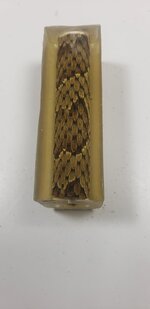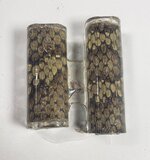jttheclockman
Member
This has come up various times so thought I would ask the question and maybe others can use this thread as a stepping stone for future casting. I have gotten into clear casting in the last 2 + years and switched to Liquid Diamonds epoxy resin for this. I did this on the hype and recommendations of some and have had excellent results. The main reason I switched from Silmar41 is because epoxy resins stick to just about everything and no bubbles. But I have been hearing lately of yellowing factor. Now as someone pointed out we thin our pen blanks so thin when we turn them that yellowing is really not a factor. Now I know from using epoxy glues that they will yellow over time including the so called clear ones. I have seen this. But casting resins are suppose to have UV prohibitors in them and thought this would deter that yellowing effect to some degree.
So my question here will be what resins do you use for clear casting such as cast on tubes?? Have you seen any yellowing effect over time and if so do you have examples to show us all.?? Where are you getting your resins from?? Are there special requirements like pressure pot, heating, time restraints for use and things of this nature. Maybe if you experimented with more than one can you give us your findings?? My only 2 resins I use are Silmar41 and Liquid Diaminds. I found silmar is great for color casting and making pen blanks but does not stick as well to parts such as watch parts when casting and bubbles form even in a pressure pot. Have not had that with LD because it is so much thinner and longer open time for bubbles to disperse. Like to hear others thoughts. Thanks.
So my question here will be what resins do you use for clear casting such as cast on tubes?? Have you seen any yellowing effect over time and if so do you have examples to show us all.?? Where are you getting your resins from?? Are there special requirements like pressure pot, heating, time restraints for use and things of this nature. Maybe if you experimented with more than one can you give us your findings?? My only 2 resins I use are Silmar41 and Liquid Diaminds. I found silmar is great for color casting and making pen blanks but does not stick as well to parts such as watch parts when casting and bubbles form even in a pressure pot. Have not had that with LD because it is so much thinner and longer open time for bubbles to disperse. Like to hear others thoughts. Thanks.




